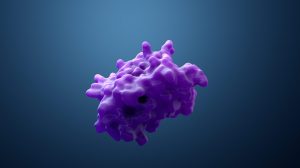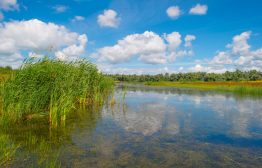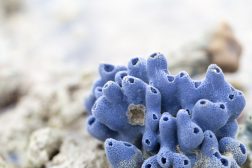Table of Contents
Definition
noun
plural: sphingolipids
sphin·go·lip·id
A type of lipid with a sphingoid base (e.g. sphingosine and ceramides) and sugar residue(s) joined together by a glycosidic bond
Details
Overview
Sphingolipids are a subgroup of lipids. Other major types of lipids are fatty acids, phospholipids, sterol lipids, and prenol lipids. Lipids are organic compounds that are readily soluble in nonpolar solvent (e.g. ether) but not in polar solvent (e.g. water).
Structure
A sphingolipid is a type of lipid comprised of a sphingoid base (e.g. sphingosine and ceramides) and sugar residue(s). The two are joined together by a glycosidic bond. Rather than a glycerol, the lipid has sphingoid base, especially sphingosine. The sphingosine is an amino alcohol that has a chemical formula of C18H37NO2. The carbohydrate is linked to a sphingolipid by a glycosidic bond. Thus, hydrolysis of the sphingolipid yields sugar (e.g. galactose or a similar sugar), a fatty acid, and sphingosine or dihydrospingosine.
Types
Sphingolipids attached to a glycan (or a carbohydrate) is referred to as glycosphingolipid. Examples are cerebrosides and gangliosides. Cerebrosides are glycosphingolipids found in the cell membranes of the neurons and the muscle cells. The cerebroside has a sphingosine core. In particular, a cerebroside structure is comprised of a monosaccharide (galactose or glucose) or an oligosaccharide linked glycosidically to the terminal OH group of ceramide. Hydrolysis of a cerebroside yields sphingosine, sugar unit (e.g. galactose or glucose), and fatty acid. The carbohydrate constituent of the cerebroside extends on the outside of the cell membrane. It, thus, plays a part in cell to cell interactions and cell recognition. Based on the carbohydrate constituent, the cerebrosides may be classified as galactocerebroside or glucocerebroside. A ganglioside is a glycosphingolipid made up of a glycosphingolipid and sialic acid(s). The sialic acid component is linked to the sugar unit. It is similar to cerebroside in terms of chemical composition. A ganglioside, though, has an additional constituent: one or more sialic acid residue(s), i.e. N-acetylneuraminic or N-glycolylneuraminic. Hydrolysis of a ganglioside would thereby yield sphingosine, fatty acid, carbohydrate, and neuraminic acid.
The gangliosides are found mainly in the cell membrane of the nervous tissue. They also occur in cells of spleen and thymus.
Another group of sphingolipids is those with ceramides (N-acylated sphingoid bases). Ceramides occur in the cell membrane of eukaryotes. They are also the lipid component of sphingomyelins. Another type of sphingolipids is one that which is formed by the addition of head groups, e.g. phosphocholine or phosphoethanolamine to the 1-hydrogxy group of a ceramide on sphingomyelins.
Inborn errors, Pathobiology, Genetics
A lysosomal disease due to an abnormal sphingolipid metabolism is referred to as sphingolipidosis. An example of sphingolipidosis is Niemann-Pick disease. It is characterized by the accumulation of sphingomyelin in brain and erythrocytes due to a deficiency in sphingomyelinase. This condition is an autosomal recessive trait. Fabry disease is another example of sphingolipidosis. It is an X-linked condition characterized by a buildup of glycolipids (i.e. ceramide trihexoside) in brain, heart, and kidney. It is caused by a deficiency in α-galactosidase A. Krabbe disease is also a sphingolipidosis that is autosomal recessive. It is caused by a deficiency in galactocerebrosidase. It is characterized by the accumulation of glycolipids, particularly galactocerebroside, in oligodendrocytes. Another is Gaucher disease, which is an autosomal recessive disease. In this condition, glucocerebrosides accumulate in erythrocytes, liver and spleen due to a deficiency in glucocerebrosidase. Tay-Sachs disease is another autosomal recessive type of sphingolipidosis wherein hexosaminidase A levels are low. This results in the buildup of GM2 gangliosides in neurons.
Biological importance
In mammals, sphingolipids protect the cell surface by providing mechanical stability and resistance. Special types of sphingolipids, such as glycosphingolipids, are involved in cell signaling and recognition.
Further reading
See also
- lipid
- Glycolipid
- Tay-Sachs disease
- Krabbe disease
- Sphingolipidosis
- Ganglioside
- Uridine diphosphate
- Farber disease
- Glycosphingolipid
© Biology Online. Content provided and moderated by Biology Online Editors







